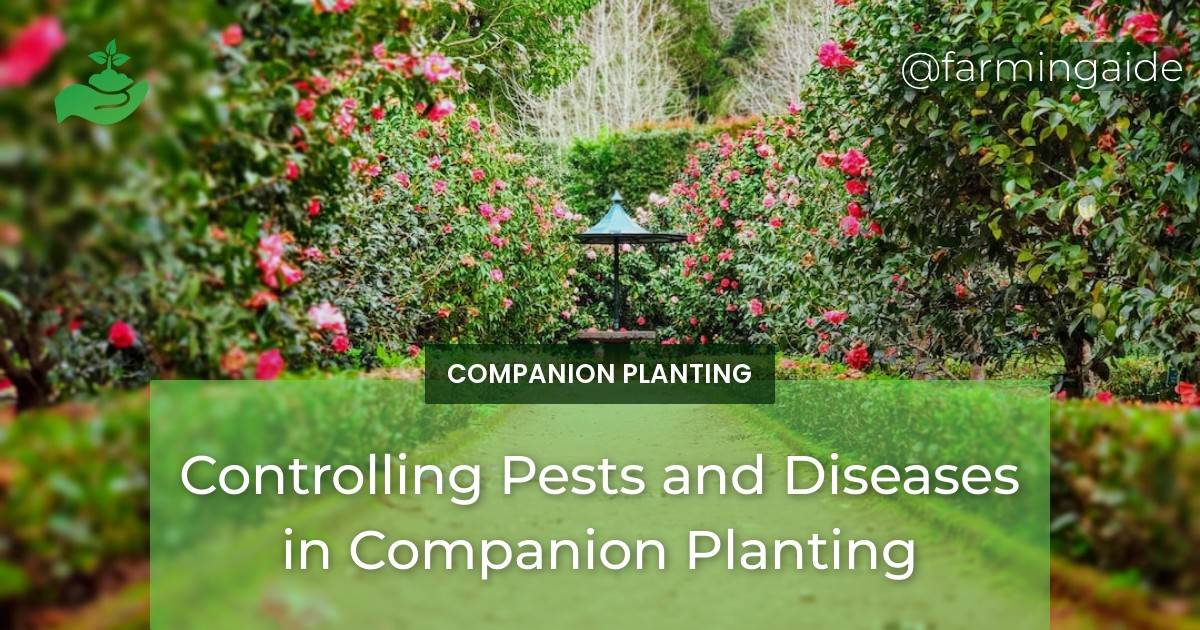Companion planting is a gardening technique that involves growing different plants together for mutual benefits. This practice has been used for centuries to promote plant growth, improve soil health, and control pests and diseases. In this article, we will delve into the world of companion planting and explore how it can be used as an effective method for pest and disease control. We will discuss the common pests and diseases that affect companion plants, as well as natural and integrated pest management strategies that can be implemented to maintain a healthy and thriving garden.
Common Pests and Diseases in Companion Planting
Companion plants are susceptible to a variety of pests and diseases, just like any other plant. However, when grown in close proximity to each other, certain plants can help repel or attract pests, making them less vulnerable to infestations. Some common pests and diseases that can affect companion plants include:
- Aphids
- Caterpillars
- Whiteflies
- Leafhoppers
- Blights
- Mildews
These pests and diseases can cause significant damage to plants, leading to stunted growth, reduced yield, and even death. It is important for gardeners to be able to identify and address these issues in a timely manner to prevent further damage.
Natural Pest and Disease Control Methods
Chemical pesticides have long been used as a quick and easy solution for pest and disease control. However, these chemicals can have harmful effects on the environment and human health. Natural pest and disease control methods, on the other hand, offer a more sustainable and eco-friendly approach. These methods can be classified into three categories: physical, biological, and cultural.
Physical Control Methods
Physical control methods involve the use of physical barriers, handpicking, and traps to prevent or remove pests from plants. Some examples include:
- Netting or row covers to protect plants from insects
- Handpicking and removing pests from plants
- Sticky traps to capture flying insects
While physical control methods can be effective, they may also have limitations. For instance, netting may not be practical for larger gardens, and handpicking may not be feasible for larger infestations.
Biological Control Methods
Biological control methods involve the use of natural predators or parasites to control pest populations. This method is based on the principle of using nature to fight nature. Some examples of beneficial insects used in companion planting include ladybugs, lacewings, and praying mantises. Factors such as climate, plant species, and pest population must be considered when using biological control methods. This method is not only effective but also sustainable, as it does not harm the environment or other beneficial insects.
ALSO READ
Cultural Control Methods
Cultural control methods involve implementing certain cultural practices to prevent or limit pest and disease infestations. These practices include crop rotation, intercropping, and sanitation. Crop rotation, in particular, is an important practice in companion planting as it helps prevent the buildup of pests and diseases in the soil. Sanitation, such as removing diseased plants and debris, can also help prevent the spread of diseases.
Integrated Pest and Disease Management
Integrated pest and disease management (IPM) is a holistic approach to pest and disease control that combines different methods to achieve the best results. This method involves identifying the pest or disease, monitoring its population, and implementing appropriate control measures. Some successful IPM strategies for specific pests and diseases in companion planting include:
- Using a combination of physical and biological control methods for aphids
- Implementing cultural practices such as crop rotation and intercropping to prevent blight and mildew
- Introducing beneficial insects to control caterpillar populations
How Can Companion Planting Help Control Pests and Diseases?
Sustainable gardening with companion planting is a natural way to manage pests and diseases. By pairing compatible plants, you can create a mutually beneficial environment that deters pests and reduces the risk of diseases. For example, planting marigolds with tomatoes can help repel pests and protect against certain soil-borne diseases.
Conclusion
In conclusion, controlling pests and diseases in companion planting is crucial for maintaining a healthy and productive garden. By understanding the common pests and diseases that affect companion plants and implementing natural and integrated pest management strategies, gardeners can effectively control these issues without harming the environment. So, next time you plan your garden, consider incorporating companion planting for a more sustainable and pest-free gardening experience.
RELATED ARTICLES:


